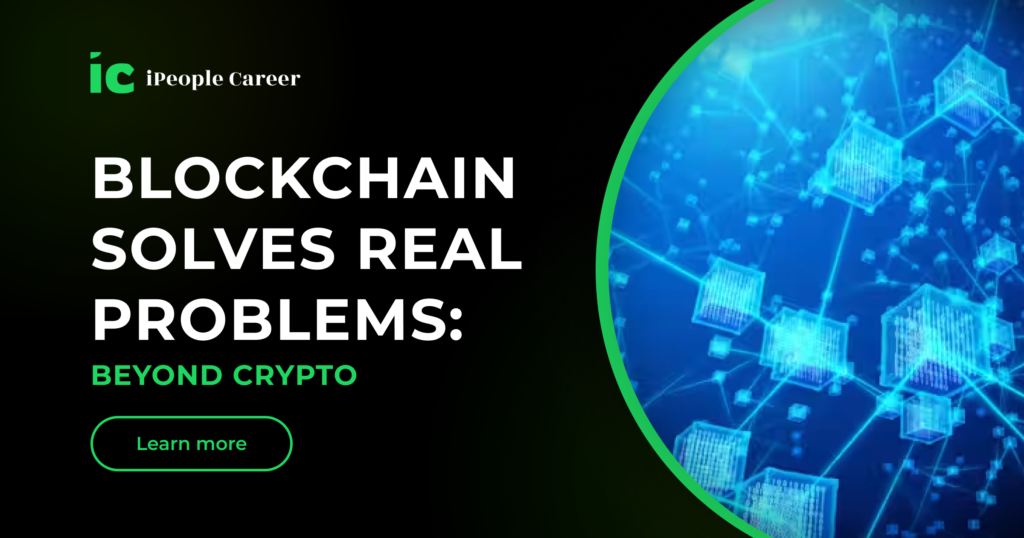
When you hear the word blockchain, the first thing that probably comes to mind is Bitcoin or other cryptocurrencies. That’s understandable, since blockchain gained mainstream attention as the technology that powers digital currencies. But the truth is, blockchain has come a long way since the early days of Bitcoin. Today, it’s being used in a wide range of industries, solving complex problems and making systems more transparent, secure, and efficient.
Blockchain is no longer just about buying and selling digital coins. It’s about transforming how businesses operate, how we track products, manage healthcare records, verify identities, buy property, and even vote. The technology behind blockchain has opened up new opportunities that go far beyond the financial world.
In this blog, we’ll explore what blockchain actually is, how it works, and the different ways it’s being used across industries. We’ll break things down in simple terms, so you can understand not just what blockchain is, but why it matters in today’s world.
What is Blockchain?
At its simplest, blockchain is a digital ledger, a special kind of database where information is stored in blocks that are linked together in a chain. This chain is maintained across a network of computers rather than being stored in one central location.
Unlike traditional databases that can be changed or controlled by a single entity, blockchain is decentralized, which means no single person or organization has full control. Once data is added to the blockchain, it’s almost impossible to change or delete it. This makes it highly secure and trustworthy.
Key Features of Blockchain:
Decentralization
- Data is not stored in one central server. Instead, it’s spread across a network of nodes (computers), each of which holds a copy of the blockchain. This ensures no single point of failure and reduces the risk of data manipulation.
Immutability
- Once a block of data is added to the blockchain, it cannot be altered or deleted. This creates a permanent record of every transaction or action, which builds trust and accountability.
Transparency
- Blockchain allows all participants in the network to view the data (in public blockchains). This transparency ensures that everyone can verify the information independently without relying on a central authority.
How It Differs from Traditional Databases:
- Traditional databases are centralized and controlled by an administrator.
- Data in traditional systems can be edited, overwritten, or deleted.
- Blockchain is distributed, and data once written is permanent and tamper-proof.
- Blockchain uses cryptographic hashing to secure and link blocks of data, unlike regular databases that do not offer such built-in verification.
Blockchain in Supply Chain Management

In supply chains, blockchain makes things able to be seen and tracked when it keeps track of each deal and moves items on a shared ledger, safe from change. From the sourcing to the delivery, clarity across the supply chain is ensured.
It can help confirm that products are real. Sectors such as food, high-end items, and gadgets gain greatly from this. Smart contracts automate processes to reduce paperwork, speeding up customs clearance, also minimizing human error.
How Blockchain Transforms Supply Chains
Supply chains have many steps and participants. These include those who supply items, those who make items, those who send items, and stores. Across all these stages, tracking goods may be open to errors or tricky, as well as fraud. This process is made simple and is made strong by Blockchain.
Enhanced Transparency and Traceability
Every product’s journey from start to end can be tracked now. This helps trace a product’s whole life, letting businesses, along with buyers, check its authenticity plus source.
Real-Time, Immutable Records
Current recordings update information concerning the location, condition, and status of goods. Since these updates are safe and unalterable, all sides possess dependable data.
Reduced Fraud, Counterfeiting, and Inefficiencies
Since the blockchain system checks and shows all of the data, changing records becomes a difficult task for bad actors. Fake goods, paperwork delays, also logistical inefficiencies are reduced.
Industry Examples
Pharmaceutical Industry
Blockchain is used for tracking medicines all through the supply chain. This does help to keep fake drugs away from all patients.
Perishable Goods
Blockchain makes certain that correct temperature plus care standards exist for things such as milk, meat, or shots. Any recorded breach is flagged.
Logistics Companies
FedEx as well as UPS exist as giants that are testing blockchain to create records of shipments that cannot be altered, plus improve how packages are tracked. They also make delivery accuracy better.
Blockchain in Healthcare
Blockchain is being used for safe patient record storage because only approved people gain access. Easy data exchange between providers makes for more trust, improves care for patients, and eases faster diagnosis.
It is also a vital part of drug supply chains because it tracks drugs for manufacturers through pharmacies to stop fake medicines. Also, blockchain technology has a use in checking clinical trial data, which gives an increase in clarity and trust in the outcomes of research
Securing Patient Data and Streamlining Processes
Private patient data is used by healthcare businesses. The major concerns include some data breaches. Privacy violations are also a worry now. Blockchain lets people keep and send this data safely without a central point.
HIPAA-Compliant Exchanges
Blockchain platforms are able to be constructed such that they adhere to privacy laws like HIPAA, also supporting secure data sharing between hospitals, labs, and insurers.
Patient-Controlled Access
To let patients keep control of access to their medical records, they get private keys. Data ownership, along with privacy, is improved.
Immutable Audit Trails
Each update for a patient’s record is time-stamped and is stored with permanence, so it can be easier to track all medical history plus spot errors or misuse.
Use Cases
Smart Contracts for Insurance
Claims can be automatically handled after certain conditions are satisfied. This processing works to reduce both delays and administrative costs.
Pharmaceutical Tracking
Drugs or medicines can be tracked through production until delivery because that guarantees safety and rule compliance.
Real-World Pilots
Patients have access to all their records through MIT’s MedRec. They can also share their records safely via it. IBM and Walmart are working together. The answers now include check food and health safety.
Blockchain in Finance and Fintech

Blockchain has transformed the finance industry via the introduction of systems that can be secure, real-time, as well as tamper-proof when recording transactions. If operational efficiency can be improved, transaction fees are reduced since intermediaries have been removed.
Smart contracts let financial agreements be done automatically now. This makes processes faster also more dependable because set conditions are satisfied. In addition, blockchain makes data more transparent, and this greater transparency is important for the reason that auditors do audit work, people fight anti-money laundering (AML), and people must comply with regulatory requirements.
Revolutionizing Financial Services
Funds and money details go all over the Earth through blockchain. It allows faster, less costly, and safer dealings. Banks or clearinghouses exist as middlemen that cut out.
Cross-Border Payments
Big charges exist, and normal global transfers need days. Blockchain is what makes real-time transfers in real-time. Blockchain also makes sure of minimal costs.
No Intermediaries Needed
People may deal directly among themselves, as financial groups are not needed anymore. This happens since money groups would handle trades by other means.
Tokenization of Assets
Land, company shares, and also artwork may be split to make digital shares or “tokens,” which does allow partial ownership and make the trading easier.
Popular Use Cases
Digital Identity for Banking
Blockchain ensures secure and quick onboarding of new customers by verifying their identity through encrypted records.
Automated Billing Systems
Smart contracts can automatically generate and settle invoices once terms are met.
Enhanced Credit Scoring
Blockchain can give fairer, more exact credit scores by analyzing proven, wider data sets, even for those with small financial histories.
Blockchain in Smart Contracts and Decentralized Applications (dApps)
Deals used on the blockchain are automatic digital contracts made with code. They do what an agreement says when certain things happen, so there is no need for people like lawyers or brokers.
Decentralized apps (dApps), made upon blockchain systems, use smart contracts to provide help in money, games, health, and more because they do not trust a single entity. In the digital economy, smart contracts with dApps together are now reshaping access, trust, and automation.
Smart Contracts and dApps in Action
Smart Contracts
A blockchain stores within itself these self-executing programs that exist. They start by themselves when certain things happen. This takes away any need for human intervention.
Decentralized Applications (dApps)
Applications work on blockchain networks. The use of central servers is not done. Smart contracts are used because of their main functions.
Industry Impact
Process Automation
Businesses can make payments, contracts, and supply chain events automated. More accuracy and less paperwork are both results of this automation.
Widespread Use Cases
DApps are useful in fields like games (owning things in games), finance (lending without central control), healthcare (sharing data automatically), and supply chains.
Democratized Access
Users gain better fairness, smaller fees, as well as more power over their data because there is no single company which controls a DApp.
Blockchain in Voting Systems

Blockchain transforms voting systems into something more secure, clear, and open to people. Usual voting methods can be vulnerable to fraud, tampering, as well as inefficiencies, blockchain can greatly reduce all these issues.
Blockchain helps election results gain public trust because it records each vote on a system where changes are not possible, so results are not changed or erased. Platforms for voting that use blockchain can enable voting remotely. The platforms thus make the democratic process more open and easy to reach, mostly for citizens abroad or with disabilities.
Securing Democratic Processes
Tamper-Proof Records
Each vote is recorded permanently and cannot be altered or deleted.
Transparency and Trust
Voters can verify that their vote was counted without revealing their identity.
Remote Voting
People can vote from anywhere with an internet connection, increasing participation.
Real-World Adoption and Future Potential
Blockchain Voting Platforms
Some countries and startups have piloted blockchain-based elections, including small-scale elections in Estonia and municipal pilot programs in the U.S.
Greater Accessibility
Voting using mobiles could be secured. That lets people in far areas or those with movement issues take part fully in voting actions.
Building Voter Confidence
As belief in organizations drops worldwide, permanent records with public checks may help bring back trust in voting setups.
Blockchain for Identity Verification
Blockchain enables decentralized digital identity systems for people to manage and control their data safely. Typical identity systems are open to breaches with storage that is centralized. The user gets control back by way of blockchain.
Decentralized Digital Identity
User Control
Individuals decide when and how their identity data is shared, rather than depending on centralized databases.
Data Breach Protection
For hackers, it is harder for them to misuse or get to sensitive data because it is not stored in just one place.
Improved Access to Services
Registration, along with login, is faster when verified identity credentials can be used across platforms.
Real-World Benefits
Faster KYC Processes
Institutions that handle finances can check on users fast, and this cuts costs and also waiting times.
Greater Privacy
Users do not have a need to give out information that is not necessary. Instead, they are able to show who they are without it.
Blockchain in Real Estate

Blockchain streamlines property transactions since it makes records digital, cuts down on paperwork, and enables smart contracts able to speed up deal closures. It lessens one’s dependence on go-betweens such as brokers, lawyers, and title agencies because it cuts down on costs, and it can possibly lead to some delays.
Blockchain helps also with keeping safe property records, which makes ownership checks easier. If records cannot be changed, disagreements will happen less. Also, tokenization for pieces of property lets more people put money in land and this act improves cash flow there.
Modernizing Property Transactions
Fractional Ownership
Properties are able to be tokenized since it allows people to invest in real estate with a smaller amount of money.
Automated Transfers
Smart contracts deal with payment and change of ownership right away and safely.
Secure Land Registries
Governments can record property ownership on blockchain to prevent fraud and land disputes.
Examples
Property Tokenization Platforms
Platforms now let users invest in real estate with blockchain-based tokens.
Government Use Cases
Sweden and Georgia are testing blockchain for national land registry systems to improve transparency and reduce corruption.
Blockchain for Data Security and Compliance
Blockchain ensures that data is stored in a way that’s transparent and secure, perfect for industries that need to meet strict compliance rules. It protects sensitive information and creates permanent audit trails that simplify reporting and improve trust.
Protecting Sensitive Information
Permanent Audit Trails
Every change is recorded, which helps organizations meet legal requirements.
Secure Data Sharing
Sensitive information like health records, financial reports, or intellectual property can be shared without exposing it to risk.
Easier Regulatory Reporting
Blockchain simplifies compliance by providing a clear, tamper-proof record of all relevant actions.
Future Trends and Challenges
While blockchain offers enormous potential, there are still hurdles to overcome.
Standardization and Interoperability
For wider use, blockchains must be able to cooperate. These varied blockchains must do so without trouble.
Regulatory Concerns
Governments are still deciding on blockchain rules, especially for money and data security.
Scalability and Sustainability
Blockchains that are slow will consume a lot of energy. The development of new models gives an increase to speed and cuts down on environmental impact
Conclusion
Blockchain is now not only the force for cryptocurrencies—it is a key tool that changes trades all over the world. Blockchain makes everyday systems more transparent, efficient, and secure since it tracks products, protects health data, verifies identities, and automates contracts.
The technology does mature, moving past its current challenges. We can then have an expectation for more great uses changing how it is we work, interact, and then live in this age of digital things. Blockchain is changing, and its promise is only starting.
Don’t forget to check out our latest expert blogs at iPeople Careers, your go-to resource for tech trends, career advice, and industry updates.
Stay informed, and stay ahead, because the future belongs to those who understand it.
FAQs
Q- What is blockchain in simple words?
A- Blockchain is a type of digital ledger because it stores data in linked blocks that are quite secure as well as hard to change. It has no central point, so not any one person or organization has control of it. That scattering power means there is not one control. The system permits many groups to share then check data openly. Its structure makes it safe from tampering. It is resistant also to the act of fraud.
Q- How is blockchain used beyond cryptocurrency?
A- Besides cryptocurrency, blockchain aids various fields to track items in supply networks, protect patient data in health, and handle faster, clearer deals for money. It also helps with online ID checks and voting setups, so security and trust get better. Blockchain’s ability to give immutability with transparency helps these applications.
Q- What problem is solved by blockchain?
A- Blockchain gives a safe and clear method for keeping track of deals. It fixes the problem of trust among new groups via checking. It is because it takes out go-betweens that direct peer-to-peer talks are made possible. This stops deceit and lowers mistakes. Accountability also increases.
Q- Why does blockchain enable solutions that extend beyond cryptocurrency?
A- Blockchain is able to safely keep any form of data, even more than only money dealings, for it is spread out and hard to alter. Its clear nature and unchangeable form let many fields make processes better in which trust, safety, and documents all stay whole. Blockchain is useful for healthcare, supply chain, identity management, also this makes.




